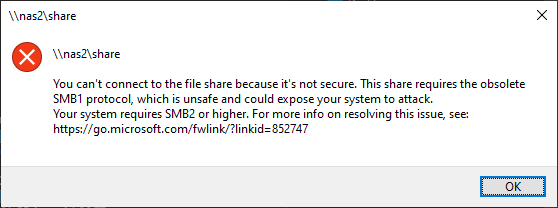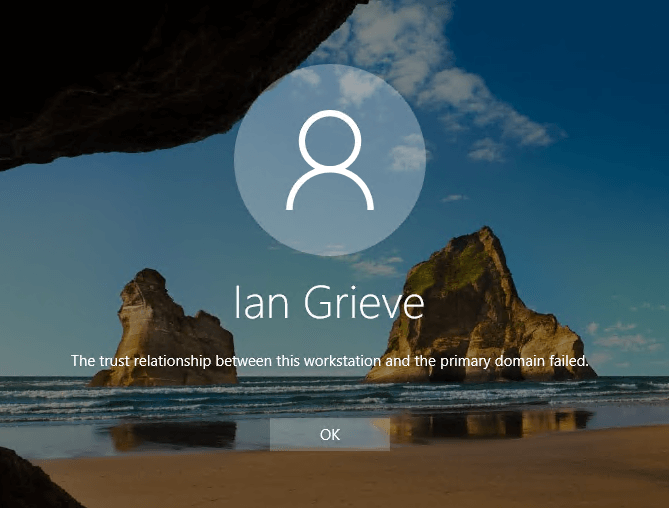 This post is part of the ClassicPress Plugin Development series in which I am going to look at both best practice for developing plugins and how I approach some requirements as well as some of the functions I commonly use.
This post is part of the ClassicPress Plugin Development series in which I am going to look at both best practice for developing plugins and how I approach some requirements as well as some of the functions I commonly use.
ClassicPress is intended to be extended and customised and has numerous ways this can be done. Shortcodes are a common way of doing this, but another way is to create a custom post type.
A post type in ClassicPress is a type of content. A single item is called a post, but this is also the name of a standard post type called posts which are used in the blog part of ClassicPress.
The default post types which ship with ClassicPress are:
- Posts
- Pages
- Attachments
- Revisions
- Navigation Menus
- Custom CSS
- Changesets
You would a custom post type for an additional type of content which does not fit within the existing post types. For example, if you wanted to create a archive of tweets from Twitter, as I did with my From Twitter plugin, create a Tweet custom post type.
Post types can support any number of built-in core features such as meta boxes, custom fields, post thumbnails, post statuses, comments, and more. See the $supports argument, below, for a complete list of supported features.
Custom post types are created usig the register_post_type function:
register_post_type(string $post_type, array|string $args = array())
$post_type (string) (Required) Post type key. Must not exceed 20 characters and may only contain lowercase alphanumeric characters, dashes, and underscores. See sanitize_key().
$args (array|string) (Optional) Array or string of arguments for registering a post type.
- 'label' (string) Name of the post type shown in the menu. Usually plural. Default is value of $labels['name'].
- 'labels' (string[]) An array of labels for this post type. If not set, post labels are inherited for non-hierarchical types and page labels for hierarchical ones. See get_post_type_labels() for a full list of supported labels.
- 'description' (string) A short descriptive summary of what the post type is.
- 'public' (bool) Whether a post type is intended for use publicly either via the admin interface or by front-end users. While the default settings of $exclude_from_search, $publicly_queryable, $show_ui, and $show_in_nav_menus are inherited from public, each does not rely on this relationship and controls a very specific intention. Default false.
- 'hierarchical' (bool) Whether the post type is hierarchical (e.g. page). Default false.
- 'exclude_from_search' (bool) Whether to exclude posts with this post type from front end search results. Default is the opposite value of $public.
- 'publicly_queryable' (bool) Whether queries can be performed on the front end for the post type as part of parse_request(). Endpoints would include:
- ?post_type={post_type_key}
- ?{post_type_key}={single_post_slug}
- ?{post_type_query_var}={single_post_slug}
If not set, the default is inherited from $public.
- 'show_ui' (bool) Whether to generate and allow a UI for managing this post type in the admin. Default is value of $public.
- 'show_in_menu' (bool|string) Where to show the post type in the admin menu. To work, $show_ui must be true. If true, the post type is shown in its own top level menu. If false, no menu is shown. If a string of an existing top level menu (eg. 'tools.php' or 'edit.php?post_type=page'), the post type will be placed as a sub-menu of that. Default is value of $show_ui.
- 'show_in_nav_menus' (bool) Makes this post type available for selection in navigation menus. Default is value of $public.
- 'show_in_admin_bar' (bool) Makes this post type available via the admin bar. Default is value of $show_in_menu.
- 'show_in_rest' (bool) Whether to include the post type in the REST API. Set this to true for the post type to be available in the block editor.
- 'rest_base' (string) To change the base url of REST API route. Default is $post_type.
- 'rest_controller_class' (string) REST API Controller class name. Default is 'WP_REST_Posts_Controller'.
- 'menu_position' (int) The position in the menu order the post type should appear. To work, $show_in_menu must be true. Default null (at the bottom).
- 'menu_icon' (string) The url to the icon to be used for this menu. Pass a base64-encoded SVG using a data URI, which will be colored to match the color scheme -- this should begin with 'data:image/svg+xml;base64,'. Pass the name of a Dashicons helper class to use a font icon, e.g. 'dashicons-chart-pie'. Pass 'none' to leave div.wp-menu-image empty so an icon can be added via CSS. Defaults to use the posts icon.
- 'capability_type' (string) The string to use to build the read, edit, and delete capabilities. May be passed as an array to allow for alternative plurals when using this argument as a base to construct the capabilities, e.g. array('story', 'stories'). Default 'post'.
- 'capabilities' (string[]) Array of capabilities for this post type. $capability_type is used as a base to construct capabilities by default. See get_post_type_capabilities().
- 'map_meta_cap' (bool) Whether to use the internal default meta capability handling. Default false.
- 'supports' (array) Core feature(s) the post type supports. Serves as an alias for calling add_post_type_support() directly. Core features include 'title', 'editor', 'comments', 'revisions', 'trackbacks', 'author', 'excerpt', 'page-attributes', 'thumbnail', 'custom-fields', and 'post-formats'. Additionally, the 'revisions' feature dictates whether the post type will store revisions, and the 'comments' feature dictates whether the comments count will show on the edit screen. A feature can also be specified as an array of arguments to provide additional information about supporting that feature. Example: array('my_feature', array('field' => 'value')). Default is an array containing 'title' and 'editor'.
- 'register_meta_box_cb' (callable) Provide a callback function that sets up the meta boxes for the edit form. Do remove_meta_box() and add_meta_box() calls in the callback. Default null.
- 'taxonomies' (string[]) An array of taxonomy identifiers that will be registered for the post type. Taxonomies can be registered later with register_taxonomy() or register_taxonomy_for_object_type().
- 'has_archive' (bool|string) Whether there should be post type archives, or if a string, the archive slug to use. Will generate the proper rewrite rules if $rewrite is enabled. Default false.
- 'rewrite' (bool|array) Triggers the handling of rewrites for this post type. To prevent rewrite, set to false. Defaults to true, using $post_type as slug. To specify rewrite rules, an array can be passed with any of these keys:
- 'slug' (string) Customize the permastruct slug. Defaults to $post_type key.
- 'with_front' (bool) Whether the permastruct should be prepended with WP_Rewrite::$front. Default true.
- 'feeds' (bool) Whether the feed permastruct should be built for this post type. Default is value of $has_archive.
- 'pages' (bool) Whether the permastruct should provide for pagination. Default true.
- 'ep_mask' (int) Endpoint mask to assign. If not specified and permalink_epmask is set, inherits from $permalink_epmask. If not specified and permalink_epmask is not set, defaults to EP_PERMALINK.
- 'query_var' (string|bool) Sets the query_var key for this post type. Defaults to $post_type key. If false, a post type cannot be loaded at ?{query_var}={post_slug}. If specified as a string, the query ?{query_var_string}={post_slug} will be valid.
- 'can_export' (bool) Whether to allow this post type to be exported. Default true.
- 'delete_with_user' (bool) Whether to delete posts of this type when deleting a user.
- If true, posts of this type belonging to the user will be moved to Trash when the user is deleted.
- If false, posts of this type belonging to the user will *not* be trashed or deleted.
- If not set (the default), posts are trashed if post type supports the 'author' feature. Otherwise posts are not trashed or deleted. Default null.
- 'template' (array) Array of blocks to use as the default initial state for an editor session. Each item should be an array containing block name and optional attributes.
- 'template_lock' (string|false) Whether the block template should be locked if $template is set.
- If set to 'all', the user is unable to insert new blocks, move existing blocks and delete blocks.
- If set to 'insert', the user is able to move existing blocks but is unable to insert new blocks and delete blocks. Default false.
- '_builtin' (bool) FOR INTERNAL USE ONLY! True if this post type is a native or "built-in" post_type. Default false.
- '_edit_link' (string) FOR INTERNAL USE ONLY! URL segment to use for edit link of this post type. Default 'post.php?post=%d'. Default value: array()
(WP_Post_Type|WP_Error) The registered post type object on success, WP_Error object on failure.
Below is an example of the registration of a custom post type in my Call-out Boxes plugin; this custom post type is not public as it only does output within the plugins shortcode and does not allow for searching:
add_action('init', 'azrcrv_cob_create_custom_post_type');
/**
* Create custom snippet post type.
*
* @since 1.0.0
*
*/
function azrcrv_cob_create_custom_post_type(){
register_post_type('call-out-box',
array(
'labels' => array(
'name' => __('Templates', 'call-out-boxes'),
'singular_name' => __('Template', 'call-out-boxes'),
'menu_name' => __( 'Call-out Boxes', 'call-out-boxes' ),
'name_admin_bar' => __( 'Call-out Box Template', 'call-out-boxes' ),
'all_items' => __('All Templates', 'call-out-boxes'),
'add_new' => __('Add New Template', 'call-out-boxes'),
'add_new_item' => __('Add New Call-out Box Template', 'call-out-boxes'),
'edit' => __('Edit Template', 'call-out-boxes'),
'edit_item' => __('Edit Call-out Box Template', 'call-out-boxes'),
'new_item' => __('New Call-out Box Template', 'call-out-boxes'),
'view' => __('View Template', 'call-out-boxes'),
'view_item' => __('View Call-out Box Template', 'call-out-boxes'),
'search_items' => __('Search Call-out Box Templates', 'call-out-boxes'),
'not_found' => __('No Call-out Box Templates found', 'call-out-boxes'),
'not_found_in_trash' => __('No Call-out Box Templates found in Trash', 'call-out-boxes'),
'parent' => __('Parent Call-out Box', 'call-out-boxes')
),
'public' => false,
'exclude_from_search' => true,
'publicly_queryable' => false,
'menu_position' => 50,
'supports' => array('title'),
'taxonomies' => array(''),
'menu_icon' => 'dashicons-testimonial',
'has_archive' => false,
'show_ui' => true,
'show_in_menu' => true,
'show_in_admin_bar' => true,
'show_in_nav_menus' => false,
'show_in_rest' => false,
)
);
}
 This post is part of the ClassicPress Plugin Development series in which I am going to look at both best practice for developing plugins and how I approach some requirements as well as some of the functions I commonly use.
This post is part of the ClassicPress Plugin Development series in which I am going to look at both best practice for developing plugins and how I approach some requirements as well as some of the functions I commonly use.








